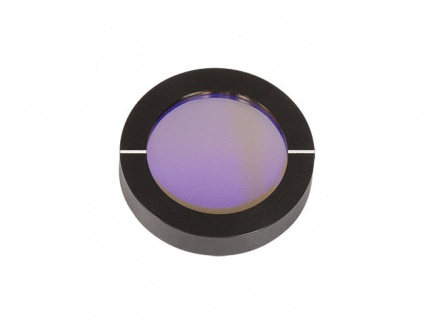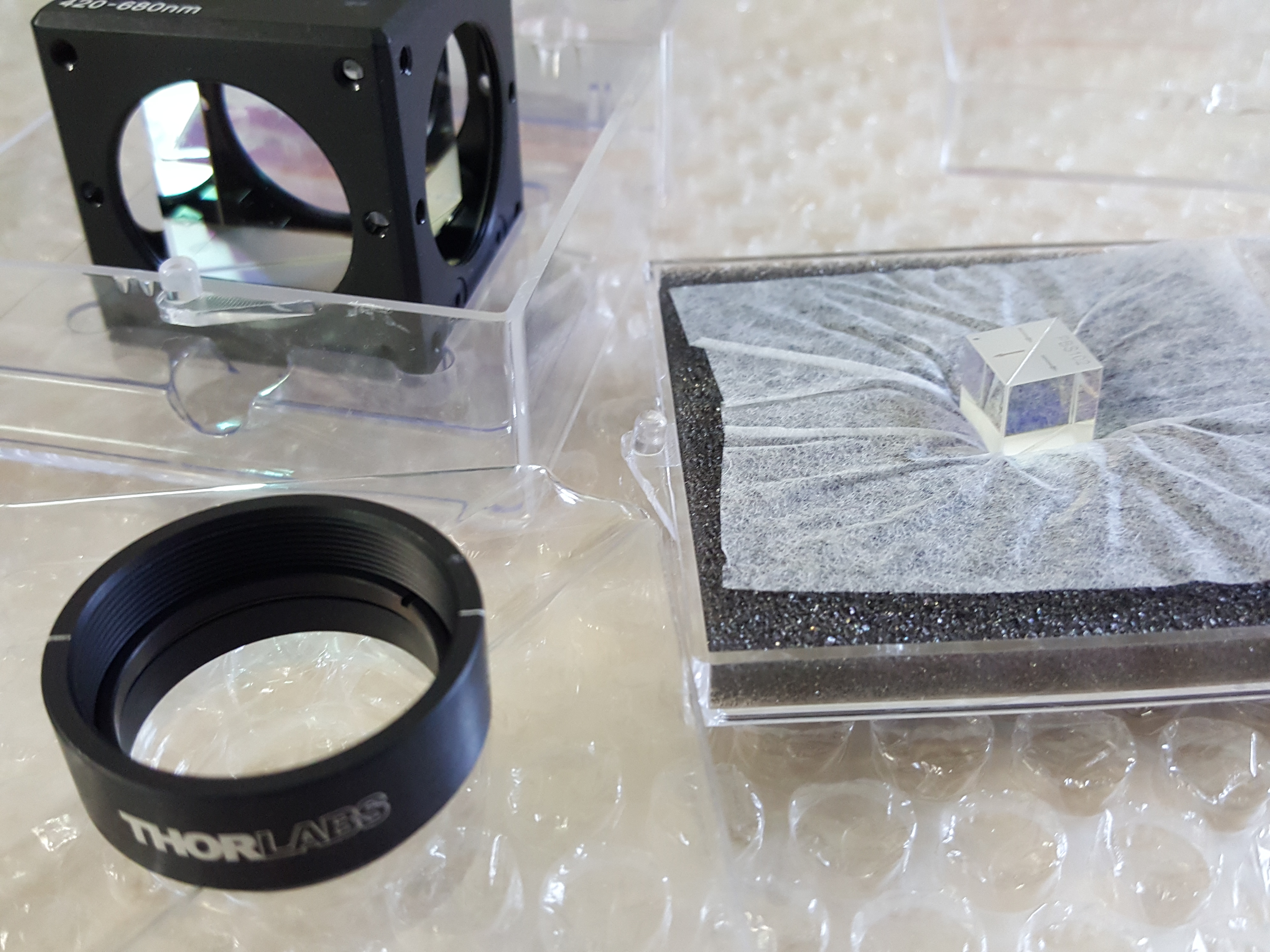Elements for separating unpolarized, randomly polarized or elliptically polarized light into orthogonal linear polarizations. Depending on the type of element, one of the polarizations is absorbed or the angular or spatial separation of the individual polarizations is achieved.
Polarisation elements based on prisms:
- Glan-Taylor prisms - polarizers based on a pair of prisms made of limestone. These elements are suitable for applications requiring a high degree of polarization and overall high transmittance.
- Rochon prisms - polarizers suitable for applications requiring a high degree of polarization over a wide spectral range
- Wolaston prisms
- Polarization Dividing Cubes - separate polarized light components at a 90° angle
Polarizing elements based on a wafer or thin film:
- High-contrast polarizing plates - polarizers achieving a contrast ratio between polarizations of up to 100,000:1
- Dichroic polarizing films - films that absorb one component of polarization.
- Thin film polarizers - polarizers formed by a dielectric layer on a glass plate. The high resistance of the dielectric layer makes them suitable for high power applications.
Broad spectrum polarizers:
- Spectral range 400 nm to 4 μm
- Large operating angle without light depolarization
- Near-constant transmission over the entire spectrum
Additional features
- Polarization rotators - elements that rotate the plane of polarization by 45° or 90°
- Depolarizing elements - elements that change linear polarization to random polarization



